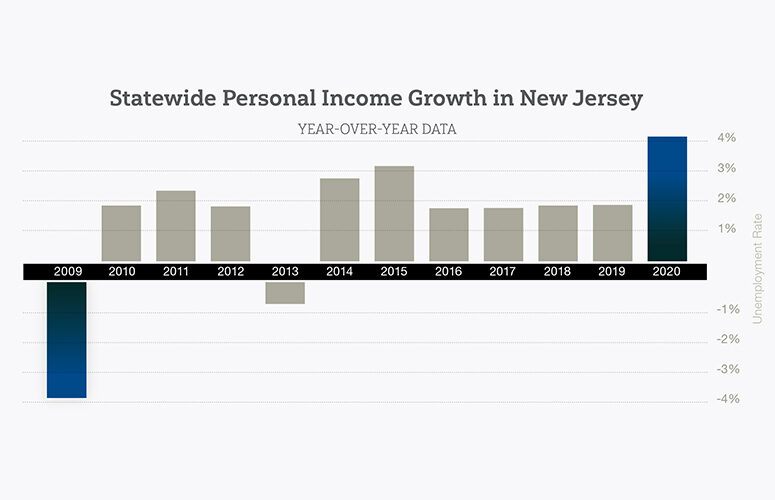
New Jersey’s Unemployment Rate Dips to 4.1 Percent, Lowest Since June 2001
On May 18, 2017New Jersey’s unemployment rate continued to decline in April for the fifth consecutive month, edging lower by 0.1 percentage point to 4.1 percent, as private-sector employers added an estimated 1,900 jobs last month and another record high level of people reported to be employed, according to data released by the U.S. Bureau of Labor Statistics (BLS).
New Jersey’s private-sector employers have added 55,900 jobs over the past year (April 2016 – April 2017) and have added 313,400 jobs since the February 2010 recessionary low point for private-sector employment. Total non-farm employment for April reached a seasonally adjusted level of 4,115,700, according to the BLS’s monthly employer survey, as the public sector shed 2,200 jobs. Additionally, the BLS’s monthly household survey showed New Jersey again hit a record high level of people (4,343,300) reporting to be employed, factoring in the state’s 4.1 percent unemployment rate, which marks a 16-year low and remains lower than the national rate of 4.4 percent.
“The April figures indicate the New Jersey labor market remains on a positive track, with private-sector employment increasing by 1,900 jobs for an average of 3,725 jobs per month thus far in 2017. This is fully in line with the performance over the current recovery. Further supporting the improving labor market is the fact that the unemployment rate, at 4.1 percent, is at its lowest level since June 2001,” said James Wooster, Chief Economist for the New Jersey Department of the Treasury.
Based on more complete reporting from employers, previously released March estimates were revised higher, up by 5,000, to show an over-the-month (February-March) total nonfarm employment contraction of 12,500 jobs. Preliminary estimates had initially indicated an over-the-month drop of 17,500.
In April, job gains were posted in five of nine major private industry sectors: leisure and hospitality (+3,100), professional and business services (+2,600), financial activities (+1,300), education and health services (+800), and other services (+100). Sectors that recorded a loss included trade, transportation, utilities (-4,600); construction (-1,000); and manufacturing (-400). Over-the-month contractions in public sector employment was led by drops at the state (-1,700) and federal government levels (-800).
Related Articles:





